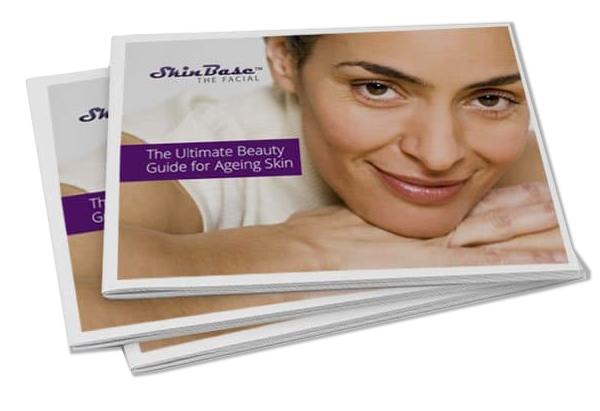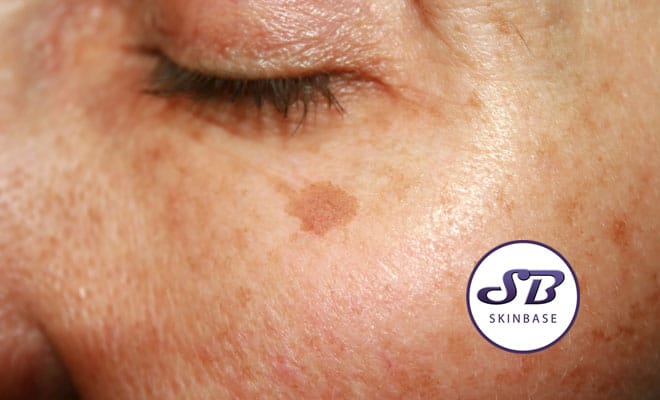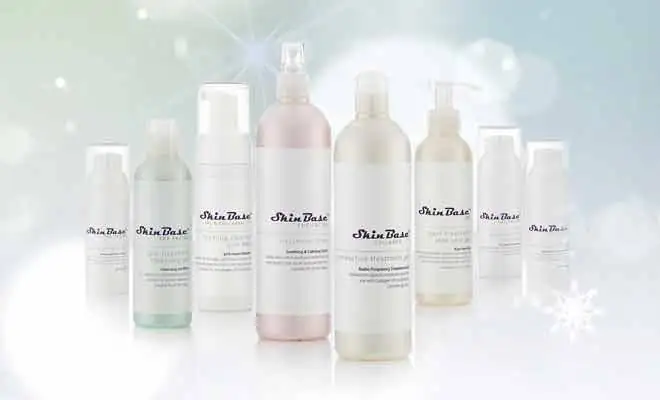Hyperpigmentation describes skin that appears darker either in small patches, large areas or on the entire body. There are three common types of hyperpigmentation: melasma, sunspots, and post-inflammatory hyperpigmentation.
SkinBase Transformation of The Year 2022
The Search has begun! You could be jetting off to the Caribbean. Follow the link for more information about the competition and how to enter.
Find out more
Melasma
Melasma is also known as “pregnancy mask”, as it often develops during pregnancy and is believed to be caused by hormonal changes. While it can occur anywhere on the body, pregnant women commonly find the skin on their stomach or face appears darker. Where the darkened patches appear is often symmetrical, for example, on both sides of your face.
90% of all sufferers are women. Melasma is more common in pregnant women, as up to 50% of pregnant women are affected by melasma. During the summer months, the pigmentation is more visible, and often improves during winter. While the discolouration is not painful and causes no physical harm, it can be a source of embarrassment, and some people may feel self-conscious due to it. After pregnancy, treat melasma with a course of SkinBase IPL.
Sunspots
As their name suggests, excess sun exposure over time causes sunspots. UV light speeds up the production of melanin, the pigment that gives your skin colour. Years of sun exposure causes melanin production in high concentrations in certain areas, which is why the condition most commonly occurs in white people over 40.
Also known as solar lentigines or liver spots, they are usually oval-shaped, flat, brown, black, or grey in appearance. Caused by sun exposure, they can often be on the face, upper back, shoulders, arms, and hands. Though age spots are harmless, many people choose professional treatments for cosmetic purposes. The SkinBase IPL treatment can treat sun damage and lighten pigmentation so that skin appears smoother and more even.
To prevent the formation of sunspots, avoid direct exposure to the sun by always wearing a broad spectrum SPF, covering up with a sun hat and staying in the shade.
Post-inflammatory Hyperpigmentation
Post-inflammatory hyperpigmentation (PIH) is a skin condition that occurs when your skin produces extra melanin as a reaction to injury or irritation. PIH can occur at the surface level (epidermis) or in the deeper layers of the skin. PIH often appears as brown or blue-grey patches and affects people of all ages. Skin conditions such as acne, eczema, and impetigo can potentially cause PIH, as can other burns, bites, and bumps.
Though sun exposure does not cause PIH, it can be detrimental to the appearance of pigmentation once the condition shows up. Sufferers should be careful to protect themselves to prevent UV rays from darkening the pigmentation and causing new spots. As previously mentioned, use a broad-spectrum suncream with a minimum of SPF 30 multiple times daily.
Like the other types of pigmentation, PIH does not pose a risk to physical health. However, it can be mentally harmful and negatively impact self-esteem and confidence. IPL safely and comfortably treats pigmentation to boost confidence and even skin tone
Hyper-Pigmentation Risk Factors
There are a number of risk factors that may increase the chances of suffering from hyper-pigmentation in general:
- Sun Exposure
- Inflammation
- Contraception
- Pregnancy
- Darker skin
- Drugs Increasing Sensitivity to Sunlight
Preventing Hyper-Pigmentation
It is not always possible to prevent hyperpigmentation; you can take steps to lower your chances of suffering in some cases.
Avoid Direct and Artificial Sunlight
Regardless of the weather, you should wear a broad-spectrum SPF daily and reapply as often as necessary. The SkinBase broad-spectrum SPF 30 lotion is a great choice to stay protected. If you prefer a dual-purpose product, the SkinBase Moisturiser with SPF is lightweight and protective too. As well as causing some pigmentation, UV rays also speed up visible signs of ageing, such as wrinkles and fine lines, and increase the chances of skin cancers. When it is hot, try to stay out of the sun during the hours of 10 am and 2 pm as they are the peak hours for exposure. You could also wear a sun hat and protective clothing to minimise damage. Preventing prolonged exposure can reduce the chances of developing sunspots.
Avoiding artificial UV rays such as tanning beds may also prevent hyperpigmentation. The UV rays from artificial sources are just as damaging as the sun and can cause your skin to develop hyperpigmentation or worsen an existing condition.
Use Vitamin C Creams or Serums
Whether you already have years of sun exposure on your skin or not, you should incorporate Vitamin C into your skincare routine. Vitamin C is a powerful antioxidant with skin brightening and anti-ageing properties. Protect skin from the adverse effects of UV rays with Vitamin C as it defends against the free radicals that cause the damage. Vitamin C also inhibits melanin production to prevent hyperpigmentation and even outs the skin tone.
Limit Touching Your Skin
Studies suggest we touch our faces over 20 times in a single hour. In general, we should avoid touching our faces as much as possible. Microbes we pick up during the day, from our mobile phones or surfaces, for example, can enter our skin through microtears. They could cause sickness, acne, or other skin problems.
Constant touches can irritate you if you have oily skin, as the oil spreads around your face from your fingertips. This irritation can lead to Post-inflammatory pigmentation. Inflammation can also be caused by picking at your spots or scratching a bite; you should avoid touching your face altogether. If touching is necessary during your skincare or makeup routine, wash your hands first.
Aloe Vera
Applying a thin layer of the SkinBase aloe vera gel onto skin daily may also help with pigmentation. Though there has only been a limited number of studies investigating the effects of aloe vera and pigmentation, the results suggest it is a beneficial plant in keeping skin tone even. Other health benefits, such as soothing burns and moisturising skin, have already been proven. Recent studies suggest chemicals in aloe vera, such as aloin and aloesin, may lighten skin by destroying existing melanin cells. Further formation of melanin in the skin is then prevented, combatting hyperpigmentation.
Download a FREE beauty guide
Discover our collection of free beauty guides.

Treating Hyper-Pigmentation
If you suspect you suffer from hyper-pigmentation, visiting a dermatologist is the best way to confirm your condition and diagnose the cause. Once you know the type of hyper-pigmentation and why, you can look into a potential treatment. A consultation with your nearest SkinBase therapist can aid your treatments decision. Find your nearest SkinBase therapist here. During the consultation, your SkinBase therapist will decide whether a course of SkinBase Microdermabrasion or SkinBase IPL is the best treatment method. They can also help you adapt your skin care routine to maximise results.
SkinBase Microdermabrasion
The SkinBase Microdermabrasion Facial was designed as a skin pigmentation treatment. Commiting to a course of treatment can improve the appearance of darkened patches of skin to boost confidence and self-esteem. During the treatment sessions, your SkinBase therapist will pass a wand delivering abrasive crystals over the skin. As the crystals work, the most superficial layer of skin cells, and any pigmentation on the epidermis will abrade. Then, a vacuum will suction debris and dead cells from the skin’s surface.
From the very first treatment your skin will be brighter, and your skin tone will be more even. As the course progresses, your SkinBase therapist will increase the intensity of the Microdermabrasion to reach deeper layers of skin and lift pigmentation. Pigmentation treatments are not restricted to the face. Your therapist can use the non-allergenic crystals all over the body to treat pigmentation wherever you are dealing with it.
SkinBase IPL Rejuvenation
Another potential treatment option is SkinBase Intense Pulsed Light, which also achieves amazing results treating pigmentation. SkinBase IPL Rejuvenation uses specific wavelengths of light to provide pigmentation treatment. During an IPL treatment, unwanted wavelengths of light are filtered, and the light remaining targets structures in the skin. The process improves the colour and texture of your skin over a course of treatment to give you your confidence back.
For pigmentation treatments, the melanin or red blood cells in the vessels are targeted. If melanin is being targeted, it will crust and slough off the skin surface to minimise the appearance of pigmentation. Once the light passes through the skin, it is absorbed by either the vessel wall or pigment in the skin. The heat energy then damages the pigment, causing the body’s natural repair mechanism to take over as it coagulates. Then, it breaks down and is reabsorbed by the body, resulting in fresher, smoother skin and a more even skin tone.
SkinBase IPL treatments are safe, as they are a medically certified system. They also feature a cryo-cooling handset which has an anaesthetic effect the surface of the skin. This means clients do not have to worry about any pain or discomfort. Many people liken the IPL treatment to the feeling of an elastic band being flicked lightly against the skin.

